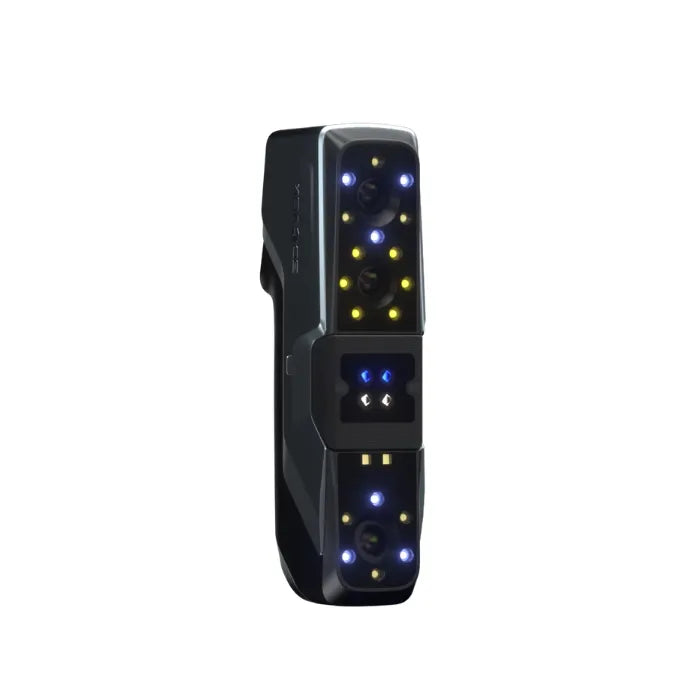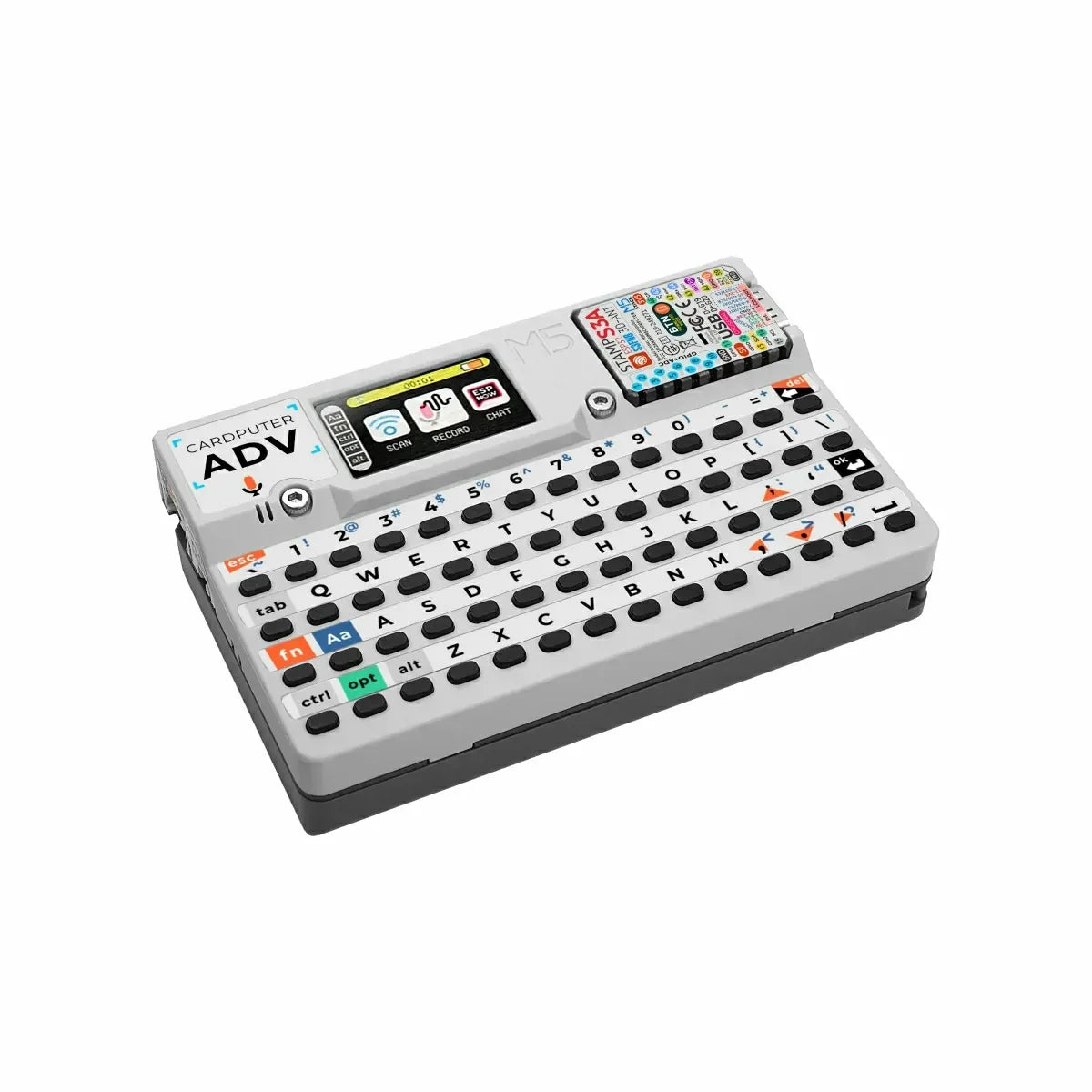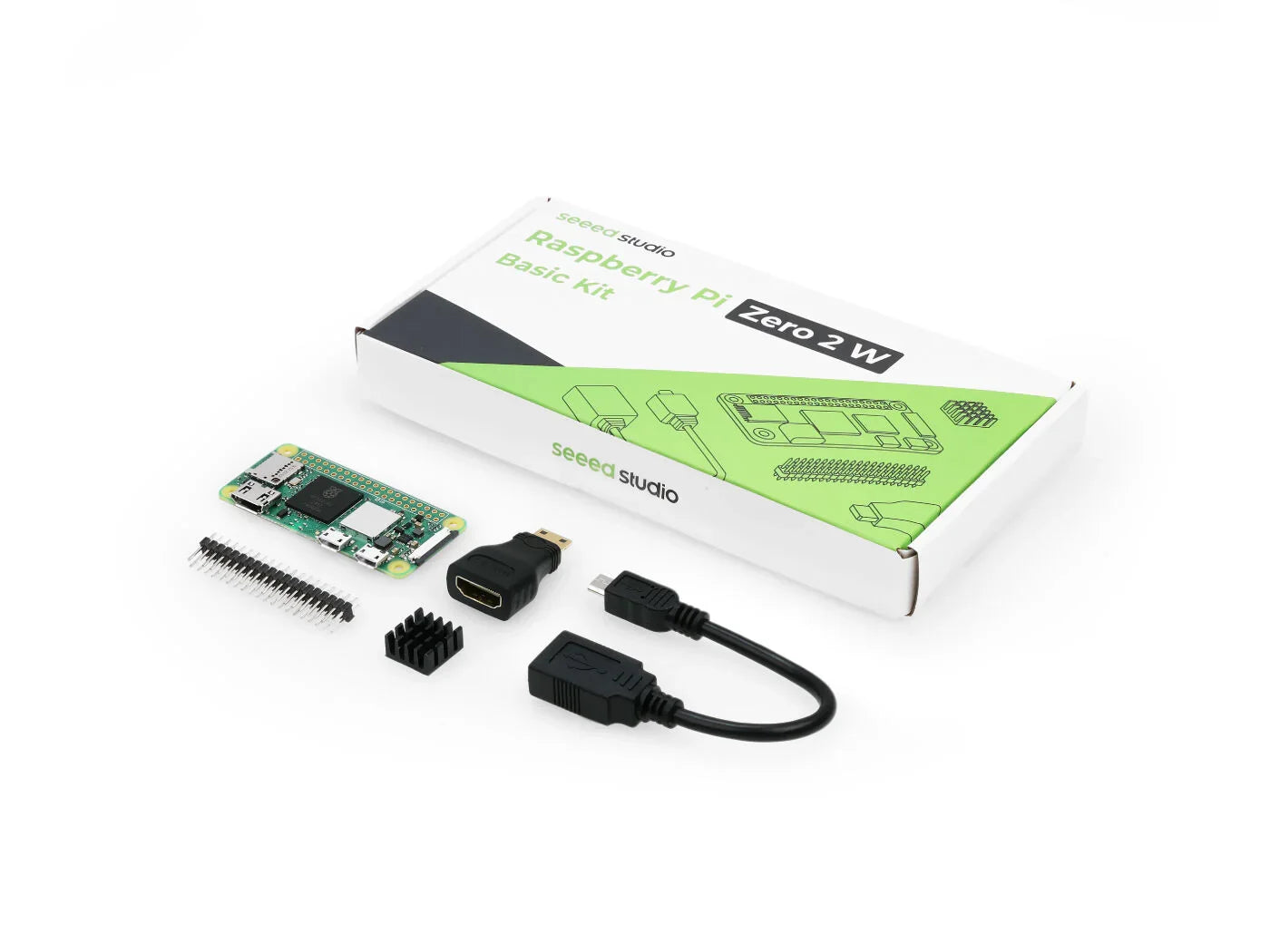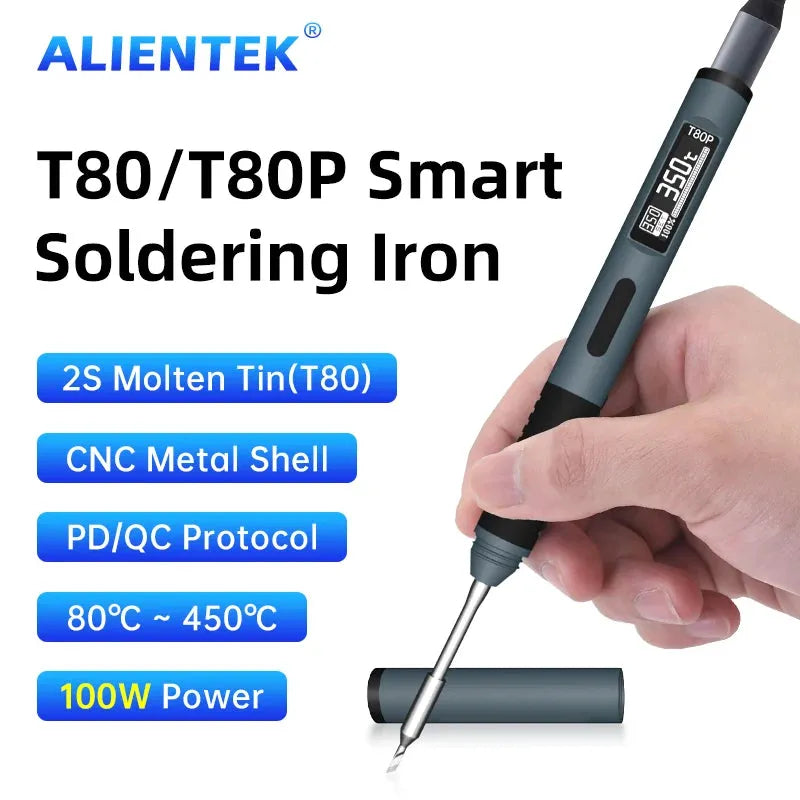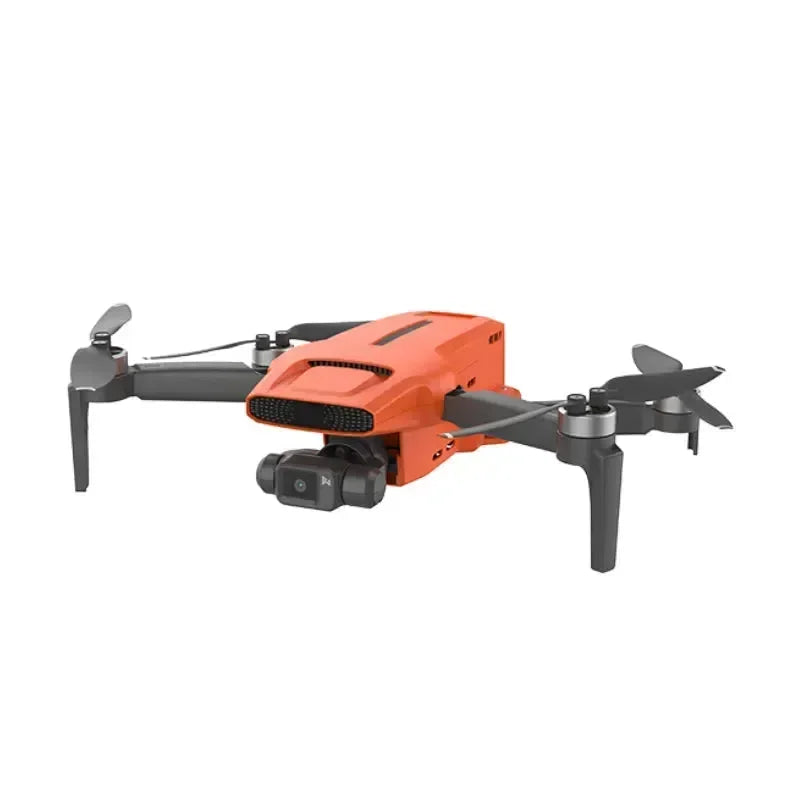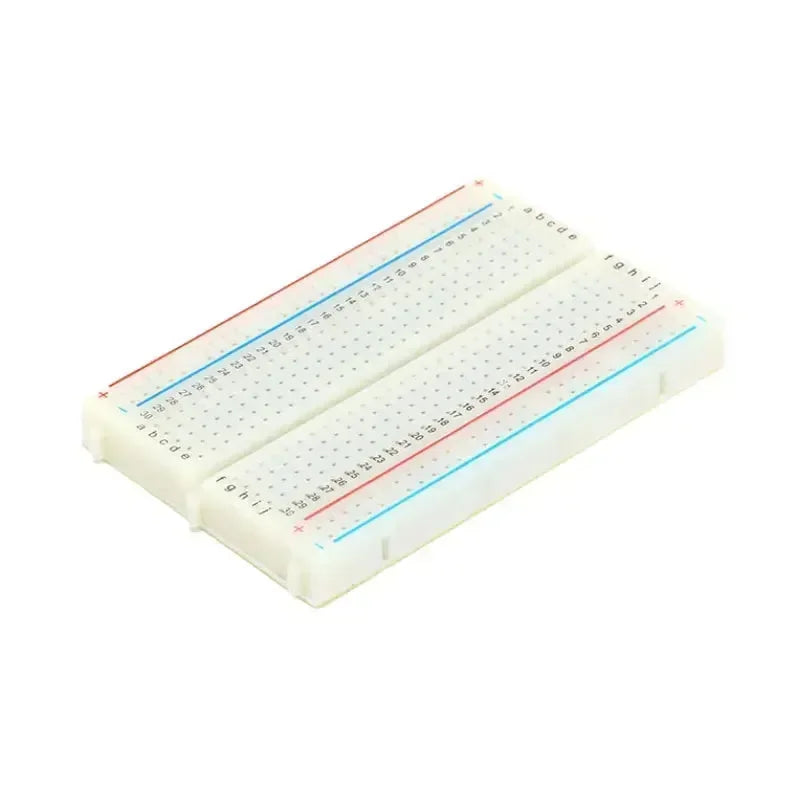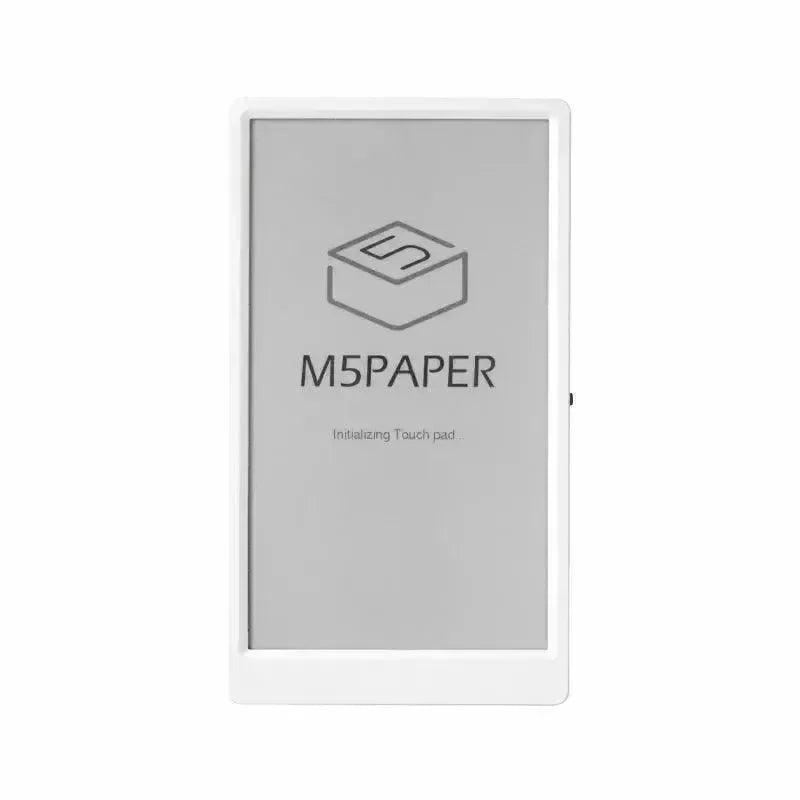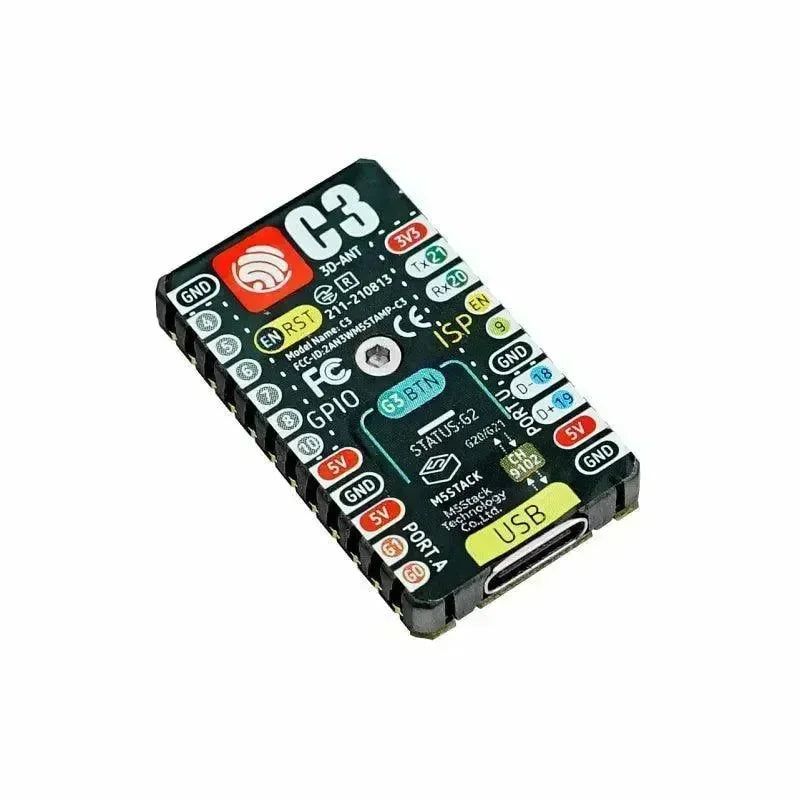¿Qué es M5Stack?
M5Stack es una plataforma que integra hardware, software y recursos comunitarios para simplificar el desarrollo de proyectos de IoT (Internet de las Cosas), robótica y otros dispositivos electrónicos interactivos. Aquí hay un resumen de sus aspectos clave:
Hardware
Controladores
- Núcleo M5Stack
-
Palo de pila M5
El M5Stick es una placa de desarrollo compacta y versátil del ecosistema M5Stack, diseñada para IoT (Internet de las Cosas), tecnología portátil y proyectos a pequeña escala. Está construida alrededor del microcontrolador ESP32, ofreciendo capacidades de Wi-Fi y Bluetooth en un factor de forma similar a un stick. Aquí hay una breve introducción:
M5Stick es una versión miniaturizada de los módulos M5Stack, que cuenta con un chip ESP32-PICO-D4, que incluye Wi-Fi, Bluetooth y Bluetooth de baja energía (BLE). Su pequeño tamaño, junto con una pantalla TFT LCD integrada de 0.96 pulgadas, lo hace perfecto para aplicaciones portátiles y vestibles. Incluye sensores integrados como un IMU de 6 ejes (Unidad de Medición Inercial) para la detección de movimiento, un emisor IR, un LED rojo y un micrófono.
Este dispositivo admite programación a través del Arduino IDE o UIFlow, una herramienta de programación visual, proporcionando flexibilidad tanto para principiantes como para usuarios avanzados. Con su batería LiPo integrada, M5Stick puede operar de forma independiente, lo que lo hace ideal para proyectos móviles. También cuenta con conectores Grove para una fácil expansión con varios sensores y módulos, así como un puerto USB Tipo-C para programación, alimentación y carga.
M5Stick es adecuado para aplicaciones como la creación de prototipos de IoT, tecnología portátil, registro de datos, monitoreo ambiental y como una unidad de control o visualización compacta en sistemas de robótica o automatización del hogar. Su pequeño tamaño, combinado con su robusto conjunto de características, lo convierte en una opción popular para el desarrollo rápido de proyectos y fines educativos en el campo de la electrónica y el IoT.
-
M5Stack ÁTOMO
La M5Stack ATOM es una placa de desarrollo compacta del ecosistema M5Stack, que utiliza el microcontrolador ESP32-PICO-D4 para ofrecer capacidades de Wi-Fi, Bluetooth y BLE en un factor de forma ultra pequeño, perfecto para proyectos de IoT y sistemas embebidos. Cuenta con una matriz de LED opcional de 5x5 para salida visual, un IMU de 6 ejes para detección de movimiento, y soporta programación a través de Arduino IDE o UIFlow, con opciones de expansión mediante apilamiento o conectores Grove, lo que la hace adecuada para dispositivos portátiles, monitoreo ambiental y aplicaciones de IoT de bajo consumo.
-
M5Stack M5Papel
El M5Paper y Core Ink de M5Stack son dispositivos especializados diseñados para proyectos de pantallas de e-Paper (papel electrónico); M5Paper integra un microcontrolador ESP32 con una pantalla E-Ink de 4.7 pulgadas, ofreciendo bajo consumo de energía y una pantalla de alta resolución para visualizaciones legibles y similares al papel, mientras que Core Ink cuenta con una pantalla E-Ink más pequeña de 2.13 pulgadas, proporcionando una solución compacta para aplicaciones de IoT que requieren larga duración de batería y visuales claras, legibles a la luz del sol, ambos soportando programación a través de Arduino IDE o UIFlow para crear dispositivos inteligentes innovadores y energéticamente eficientes.
-
Sello M5Stack
La M5Stack Stamp es una placa de desarrollo en miniatura de M5Stack, que cuenta con un microcontrolador ESP32-PICO-D4, proporcionando capacidades de Wi-Fi y Bluetooth en un factor de forma extremadamente compacto diseñado para aplicaciones IoT, proyectos de bricolaje y como una solución versátil de bajo consumo para sistemas embebidos, donde el espacio es limitado, pero la funcionalidad es crítica.
Módulos
Módulos M5Stack son componentes versátiles y apilables para tus kits de desarrollo M5Stack. Los Módulos M5Stack ofrecen posibilidades infinitas para tus proyectos. Estos módulos plug-and-play son fáciles de integrar, lo que permite la creación rápida de prototipos y el desarrollo de aplicaciones IoT, sistemas de automatización y más. Respaldados por una documentación completa y una comunidad vibrante, los Módulos M5Stack te empoderan para innovar.

Sensores
Sensores M5Stack son componentes modulares de alta calidad diseñados para trabajar con kits de desarrollo M5Stack. Estos módulos proporcionan datos precisos para tus proyectos de IoT y dispositivos inteligentes. Fáciles de conectar y configurar, los Sensores M5Stack permiten la creación rápida de prototipos y el desarrollo de aplicaciones como automatización del hogar, monitoreo ambiental y robótica. Con documentación completa y soporte de la comunidad, los Sensores M5Stack facilitan la expansión de la funcionalidad de tus proyectos.

Cámaras
Cámaras M5Stack son módulos de imagen versátiles diseñados para la integración en proyectos de IoT, que ofrecen imágenes de alta resolución, ESP32 integrado para conectividad Wi-Fi, Bluetooth y BLE, y compatibilidad con el ecosistema modular de M5Stack para una fácil expansión, todo soportado por Arduino IDE o UIFlow para diversas opciones de programación.

Equipos
Cámaras M5Stack son módulos de imagen versátiles diseñados para la integración en proyectos de IoT, ofreciendo imágenes de alta resolución, ESP32 integrado para conectividad Wi-Fi, Bluetooth y BLE, y compatibilidad con el ecosistema modular de M5Stack para una fácil expansión, todo soportado por Arduino IDE o UIFlow para diversas opciones de programación.

Software
Quemador M5
Software general
- Flujo de interfaz de usuario de M5Stack
- Convertidor de fuentes VLW
- Empacadora EasyLoader
- API M5 EZDATA 2.0
- Diseñador de Bloques de UIFlow
Cómo utilizar M5Stack
Flujo de interfaz de usuario
UIFlow es un IDE de programación gráfica que es fácil de usar para cualquier persona. Soporta más de 100 periféricos y sensores de hardware M5, admite la adición y expansión con un solo clic, apoya efectivamente la creación de prototipos de productos y acelera el proceso de desarrollo hasta la producción final. En este tutorial, introduciremos cómo grabar el firmware de la versión 1.x de UIFlow en tu dispositivo M5Stack y usar el IDE Web de UIFlow para el desarrollo secundario del producto. Soporta la carga de programas de forma inalámbrica/por cable, el programa se puede ejecutar haciendo clic en él, sin necesidad de compilar repetidamente.

Configuración
Instalar UIFlow: Descargue e instale el software UIFlow desde el sitio web de M5Stack o use la versión en línea.
Conecta tu dispositivo: Conecta tu dispositivo M5Stack a tu computadora a través de USB o utiliza la versión en línea con una conexión Wi-Fi.
Descripción general de la interfaz
Área de Bloques: Aquí es donde arrastras y sueltas bloques para construir tu programa.
Diagrama de flujo: Visualiza el flujo de tu programa. Los bloques pueden estar conectados para mostrar la lógica y la secuencia de operaciones.
Área de Código: Ve el código generado en lenguajes como Arduino, MicroPython o JavaScript.
Configuración del Dispositivo: Configure los parámetros de su dispositivo M5Stack aquí.
Programación
Arrastrar y Soltar: Utiliza bloques preconstruidos para funciones comunes como control de GPIO, configuración de Wi-Fi, lectura de sensores, etc.
Funciones Personalizadas: Puedes definir bloques o funciones personalizadas para reutilizar código.
Lógica y Control: Utiliza bloques de control para bucles, condicionales y manejo de eventos.
Usando bloques
Selecciona un Bloque: Haz clic en la categoría a la izquierda para ver los bloques disponibles.
Arrastrar al Diagrama de Flujo: Arrastra bloques al área del diagrama de flujo y conéctalos en el orden en que deseas que ocurran las operaciones.
Configurar Bloques: Establezca parámetros para cada bloque haciendo clic en él.
Pruebas y Carga
Prueba: Haz clic en el botón "Prueba" para simular el funcionamiento de tu programa sin subirlo al dispositivo.
Subir: Una vez satisfecho, haz clic en "Subir" para enviar tu programa al dispositivo M5Stack.
Características avanzadas
Variables: Define y utiliza variables para almacenar y manipular datos.
Funciones: Crea funciones personalizadas para código reutilizable.
Eventos: Configura controladores de eventos para botones, sensores o temporizadores.
Depuración
Consola: Usa la consola para imprimir mensajes de depuración o monitorear los valores de las variables.
Depuración de Flujo: UIFlow proporciona herramientas de depuración visual para rastrear el flujo de tu programa.
Aprendizaje y Documentación
Tutoriales: M5Stack ofrece tutoriales en su sitio web para ayudarte a comenzar y aprender técnicas avanzadas.
Comunidad: Participa en la comunidad de UIFlow para obtener consejos, trucos y proyectos compartidos.
Expansión y Módulos
Agregar Módulos: Utiliza bloques para interactuar con los diversos módulos de M5Stack como sensores, pantallas o cámaras.
Preguntas frecuentes
Así es como compras M5Stack en alemán
Para comprar productos M5Stack en Alemania, siga estos pasos:
Visitar tiendas en línea:
Sitio web oficial de M5Stack: M5Stack a menudo tiene un sitio web internacional donde puede comprar directamente de la fuente. Preste atención a los costos y tiempos de envío a Alemania.
Plataformas de terceros: openelab.io
¿Para qué se utiliza M5Stack?
M5Stack se utiliza para proyectos de IoT, prototipado, automatización, wearables, robótica y obras de arte interactivas, gracias a su naturaleza modular, sensores integrados y diversas opciones de expansión.
¿Es m5stack compatible con Arduino?
Sí, M5Stack es compatible con Arduino, ya que se basa en un microcontrolador ESP32 que es compatible con la IDE de Arduino y ofrece una variedad de bibliotecas y ejemplos basados en Arduino.
¿Qué es M5StickC?
M5StickC es una placa de desarrollo IoT compacta y todo en uno de M5Stack, que se basa en un microcontrolador ESP32-PICO y está diseñada para proyectos portátiles, aplicaciones de sensores y dispositivos interactivos, con una pantalla OLED, sensores integrados y opciones de expansión.
¿Qué puedo hacer con un M5stickc?
Con un M5StickC puede realizar proyectos de IoT, como estaciones meteorológicas, rastreadores de fitness, dispositivos de control para el hogar inteligente, controlar pequeños robots, desarrollar juegos interactivos y utilizarlo como una solución portátil para registro de datos, monitoreo de sensores o como un botón de emergencia.
¿Cómo se carga un M5stick?
Para cargar un M5StickC, conecte el dispositivo a una fuente de alimentación como una computadora o un cargador mediante el cable USB incluido; el proceso de carga comenzará automáticamente y se mostrará un estado LED de carga.
¿Cuáles son algunas de las ventajas de usar el M5stickc en una aplicación IoT?
El M5StickC ofrece ventajas para aplicaciones IoT como su tamaño compacto, la versatilidad de uso gracias a los sensores integrados, fácil programación, bajo consumo de energía y la posibilidad de ser ampliado mediante módulos de expansión, lo que lo hace ideal para proyectos portátiles y energéticamente eficientes.
¿Cómo enciendo el m5stickc plus 2?
Para encender el M5StickC Plus 2, presione el botón de encendido en el lado del dispositivo durante aproximadamente un segundo, hasta que se active la pantalla y el dispositivo se inicie.

